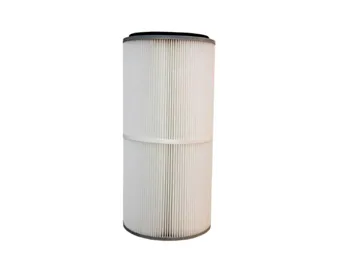 Tel:
+8615930870079
Tel:
+8615930870079
ต.ค. . 19, 2024 20:09 Back to list
gas turbine air intake filter
Gas Turbine Air Intake Filters A Critical Component for Performance and Efficiency
Gas turbines are pivotal in various sectors, including power generation, aviation, and industrial processes. To optimize their performance and longevity, one key component that often gets overlooked is the air intake filter. The primary function of these filters is to protect the turbine from airborne contaminants, ensuring that only clean air enters the combustion chamber. This article explores the significance of gas turbine air intake filters, their types, maintenance, and impact on turbine performance.
Importance of Air Intake Filters
Air is the primary medium in gas turbines for combustion; thus, its quality is vital. Contaminants such as dust, dirt, salt, and pollen can severely impact turbine efficiency and reliability. These particles can lead to erosion, fouling, and corrosion of turbine components, significantly reducing the lifespan of the equipment. In extreme cases, the presence of contaminants can even lead to failure of the turbine, resulting in costly repairs and downtime.
Implementing effective air intake filters is essential to mitigate these risks. High-quality filters can capture a wide range of particulate matter, ensuring that the air entering the turbine is as clean as possible. This not only protects the turbine internals but also enhances the overall performance, as a cleaner intake allows for more efficient combustion.
Types of Air Intake Filters
There are several types of air filters used in gas turbines, each designed to meet specific operational demands
1. Panel Filters These are the most common type of filters used in gas turbines. They come in various efficiencies and are typically made from synthetic or fiberglass materials. Panel filters are effective in removing large particles but may need to be supplemented with additional filtration for fine particulate matter.
2. Bag Filters These filters provide higher dust-holding capacity and efficiency compared to panel filters. Bag filters are particularly effective in environments with high dust concentrations, making them suitable for industrial applications.
gas turbine air intake filter

3. Cyclone Separators These devices use centrifugal force to separate larger particles from the air stream before it reaches the filter. While not a standalone solution, they can significantly reduce the load on primary air filters, extending their service life.
4. Electrostatic Filters These filters use an electric charge to attract and trap particles. They are highly efficient but may require additional maintenance and energy input compared to conventional filters.
5. HEPA Filters High-Efficiency Particulate Air (HEPA) filters are designed to capture very fine particles, including allergens and pollutants. They are often used in sensitive environments, but their high resistance can reduce airflow if not managed properly.
Maintenance and Monitoring
Regular maintenance of air intake filters is crucial for ensuring consistent turbine performance. Filters should be checked and replaced based on the operational environment and manufacturer recommendations. In dusty or industrial settings, filters may need to be serviced more frequently.
Moreover, advanced monitoring systems can be integrated into the turbine's operations to continuously assess filter performance. These systems can evaluate airflow rates, pressure drops, and particle loads, providing actionable insights into when maintenance is needed.
Conclusion
Gas turbine air intake filters are essential for protecting the efficiency and longevity of the turbines. By understanding the various types of filters available and implementing proper maintenance protocols, operators can significantly enhance turbine performance and reduce operational risks. As the demand for cleaner, more efficient power generation continues to rise, investing in effective air intake filtration systems will remain a critical consideration for industries relying on gas turbines. With the right filtration strategy, operators can ensure optimal performance while minimizing costly downtime and maintenance needs.
-
Types and Applications of Air Filtration CartridgesNewsJul.28,2025
-
The Role of Gas Turbine FiltersNewsJul.28,2025
-
Mastering Air Filter Cartridge UseNewsJul.28,2025
-
Advanced Turbine Filters for Modern Gas TurbinesNewsJul.28,2025
-
Cellulose Air Filter Cartridge Advantages in Dust FiltrationNewsJul.28,2025
-
Cellulose Filters for Air Particle ReductionNewsJul.28,2025

 Email:
Email:





